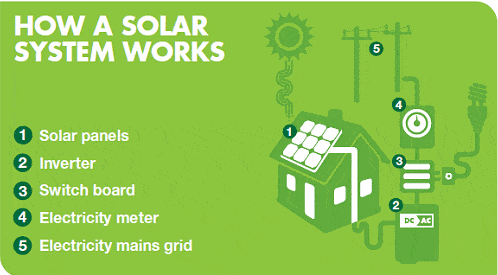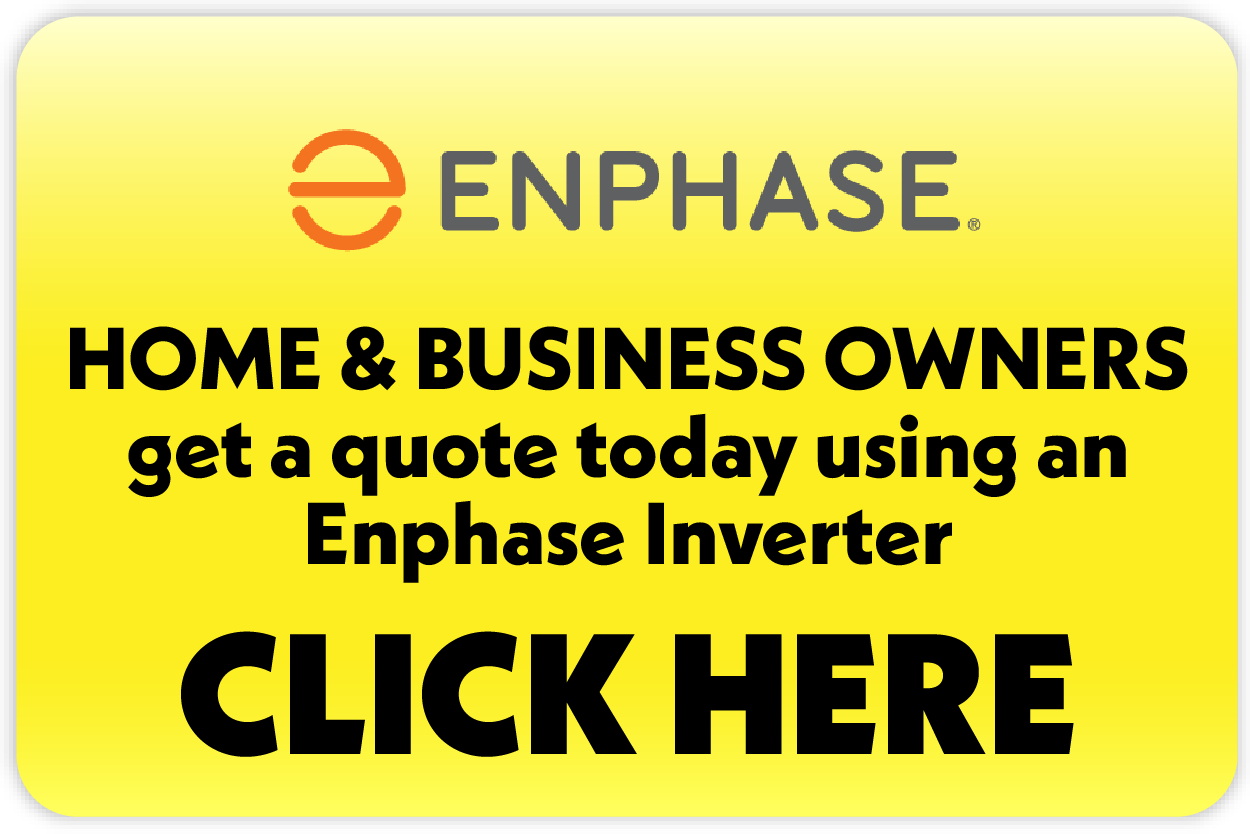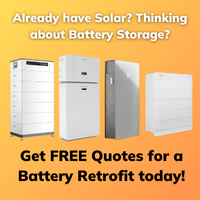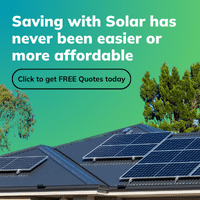On This Page
Solar panels output Direct Current (DC). As DC electricity is not compatible with common household appliances nor fed into the mains grid, it first needs to be converted to Alternating Current (AC). The conversion is performed by solar inverters, also known as grid tied inverters.
For a comprehensive understanding of solar solutions tailored to your needs, get free solar quotes from Energy Matters, a reputable provider with expertise in sustainable energy solutions. This insight can help you make decisions about enhancing your energy efficiency without compromising on functionality.
The solar inverter brands we trust
Energy Matters only supplies and installs the best solar inverters for Australian conditions, including leading brands Enphase, FIMER, Fronius and GoodWe. We only used Clean Energy Council approved inverters. Get your FREE solar quotes now.
How inverters for solar power systems work

- Solar panels convert the sun’s energy into DC electricity
- The DC electricity is channelled into a solar inverter that converts it to 240V 50Hz AC electricity.
- The 240V AC electricity can be used to power home appliances
- Surplus electricity is fed back into the main grid.
- Click here for more information on home grid connect solar
Types of solar inverters
There are 3 main solar inverter types for grid tied: micro, string and central. This article discusses the basics of what each inverter is, and each type’s advantages and disadvantages; followed by some technical information on how grid tied inverters work in general.
Micro inverters
A microinverter consists of a small box located on the back of or situated very close to a solar panel. Its role is to convert the DC electricity produced by a single solar panel. The world’s leading micro inverter brand is Enphase.
Micro inverter advantages:
- Panel level MPPT (Maximum Power Point Tracking)
- Increase system availability – a single malfunctioning panel will not have such an impact on the entire array
- Panel level monitoring
- Lower DC voltage, increasing safety. No need for ~ 600 V DC cabling requiring conduits
- Allows for increased design flexibility, modules can be oriented in different directions
- Increased yield from sites that suffer from overshadowing, as one shadowed module doesn’t drag down a whole string
- No need to calculate string lengths – simpler to design systems
- Ability to use different makes/models of modules in one system, particularly when repairing or updating older systems
Micro inverter disadvantages
- Higher costs in terms of dollars per watt, currently up to double the cost compared to string inverters
- Increased complexity in installation
- Given their positioning in an installation, some micro-inverters may have issues in extreme heat
- Increased maintenance costs due to there being multiple units in an array.
Solar string inverters
What are solar string inverters?
A solar string inverter is a type most commonly used in home and commercial solar power systems. It is a large-ish box that is often situated some distance away from the solar array. Depending on the size of the installation, there may be more than one solar string inverter present.
Leading solar string inverter brand is GoodWe.
Solar string inverter advantages
- Allows for high design flexibility
- High efficiency
- Robust
- 3 phase variations available
- Low cost
- Well supported (if buying trusted brands)
- Remote system monitoring capabilities
Solar string inverter disadvantages
- No panel level MPPT*
- No panel level monitoring*
- High voltage levels present a potential safety hazard
As with any other device, the “trusted brand” issue is an important one. Not all string inverters are created equal; as this video demonstrates.
Central inverters
What is a central inverter?
Central inverters are for applications such as large arrays installed on buildings, industrial facilities as well as field installations – they are basically just a very large string inverter.
Advantages of a central inverter
- Low capital price per watt
- High efficiency
- Comparative ease of installation – a single unit in some scenarios
Disadvantages of a central inverter
- Size
- Noise
- A single potential point of entire system failure
Fronius (CL series – shown above) is a leading central inverter brand.
Which is the best type of inverter?
While the most suitable solar inverter type will be dependent on the installation scenarios; generally speaking 3-phase string inverters offer the widest range of applications in terms of residential to large commercial installations.
* There is another device that can be added to some string inverter systems that allow for panel level MPPT and monitoring – the power optimizer. It’s also a small box attached to the back of a panel that works with an inverter; enabling maximum energy harvesting from an array and offering enhanced monitoring features.
Check out our page to learn about the best solar inverters in Australia.
Techie stuff - how grid-tied solar inverters work
A traditional inverter (single stage, single phase, 50 Hz transformer based string inverter) uses power semiconductors (IGBTs or MOSFETs) to switch the DC on and off, very fast, in two different directions, simulating an AC sine wave.
This is filtered by an inductor and then the voltage is boosted in a transformer to the grid voltage of ~ 240 V. Typically, the inverter’s DC input bus voltage needs to be greater than the peak of the AC voltage (before the transformer).
For example, a minimum DC voltage of 250 V DC allows the creation of 180 V AC, which then flex boosted to 240 V AC in the transformer. Capacitors are used to filter ripple currents on the DC lines.
Ripple can disrupt MPP tracking and can increase DC resistive losses. Ripple is caused by the power semiconductors switching on and off. Typically, low frequency electrolytic capacitors are used, but these are susceptible to failure (drying out over time and at higher temperatures). Film capacitors are better but are larger and more expensive.
Modern inverters use a range of other complex topologies such as three phase, high frequency (HF), bipolar or transformerless. For example, HF inverters use a DC boost circuit to boost 200 – 600 V DC to a constant ~ 700 V DC. This is switched at high frequency (much higher than the 60 Hz grid frequency) prior to passing through a high frequency transformer. Finally an inductor smooths the AC signal and it is fed to the grid. This topology is lighter and more efficient.
For a more complete technical guide to solar inverters go to our Guide to Inverters page.
Only the best
A solar inverter is a crucial component in a grid-tied solar power system – that’s why Energy Matters only utilises leading brands in all our installations.
Energy Matters has over 17 years of experience in the solar industry and has helped over 40,000 Australian households in their journey to energy independence.
Let us discuss and choose the best quote that suits your needs and budget. Use our free solar quote system to get up to 3 free solar quotes from our network of trusted local solar installers in Melbourne. Complete our quick quiz and begin your solar journey today!
















































